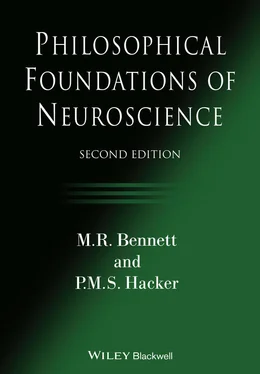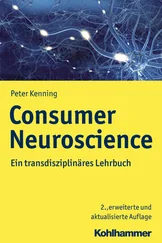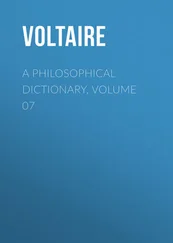Penfield on the mind
Towards the end of a long life dedicated to neurosurgery and neurology, Penfield published a small volume entitled The Mystery of the Mind . This was, he wrote, ‘the final report of my experience’ – an overview of what he had achieved in respect of his youthful objective. ‘The nature of the mind’, he averred, ‘presents the fundamental problem, perhaps the most difficult and most important of all problems’ ( MM 85). What he wished at last to do, he wrote in the preface, was to ‘consider the evidence as it stands, and ask the question Do brain mechanisms account for the mind? Can the mind be explained by what is now known about the brain?’ ( MM , xiii). Referring explicitly to the above-quoted remark of Sherrington’s, Penfield judged that ‘the time has come to look at his two hypotheses, his two “improbabilities”. Either brain action explains the mind, or we must deal with two elements’ ( MM 4). Despite his methodological commitment, Penfield found himself driven towards a Cartesian view not unlike that of his great teacher. ‘For my own part’, he wrote,
after years of striving to explain the mind on the basis of brain-action alone, I have come to the conclusion that it is simpler (and far easier to be logical) if one adopts the hypothesis that our being does consist of two fundamental elements … Because it seems to me certain that it will always be quite impossible to explain the mind on the basis of neuronal action within the brain, and because it seems to me that the mind develops and matures independently throughout an individual’s life as though it were a continuing element, and because a computer (which the brain is) must be programmed and operated by an agency capable of independent understanding, I am forced to choose the proposition that our being is to be explained on the basis of two fundamental elements. This, to my mind, offers the greatest likelihood of leading us to the final understanding toward which so many stalwart scientists strive. ( MM 80)
What led him to this conclusion? Two features in particular had impressed Penfield. First, given his specialization in epilepsy cases, he was, unsurprisingly, impressed by the phenomena of epileptic automatism. Second, he was powerfully struck by the responses elicited from patients in reaction to electrode stimulation during surgery.
Penfield’s interpretation of epileptic automatism
A patient, suffering an epileptic seizure that has induced automatism, will often continue to execute whatever more or less stereotypical tasks he was engaged in. He will, however, be in a fugue condition – that is, after recovery he will remember nothing of what he has done during the seizure. Penfield interpreted automatism as showing that the epileptic seizure disconnected the mind from what, following Hughlings Jackson, 23he called ‘the brain’s highest mechanism’ (a precursor of Eccles’s ‘liaison brain’). He took it that the brain, during the period of automatism, is controlling the behaviour of a ‘human automaton’ in accordance with antecedent ‘programming’ by the mind. Just as the programming of a computer comes ‘from without’, so too the programming of the brain, which is, Penfield claimed, a biological computer, is effected by the mind via the brain’s highest mechanism. Purpose comes to it from outside its own mechanisms. Short-term programming obviously serves a useful purpose, making possible automatic continuation of routine tasks, and this is visibly and strikingly manifest during periods of such epileptic seizures.
That this highest mechanism, most closely related to the mind, is a truly functional unit is proven by the fact that epileptic discharge in gray matter that forms a part of its circuits, interferes with its action selectively. During epileptic interference with the function of this gray matter … consciousness vanishes, and with it goes the direction and planning of behaviour. That is to say, the mind goes out of action and comes into action with the normal functioning of this mechanism.
The human automaton, which replaces man when the highest brain-mechanism is inactivated, is a thing without the capacity to make completely new decisions. It is a thing without the capacity to form new memory records and a thing without that indefinable attribute, a sense of humour. The automaton is incapable of thrilling to the beauty of a sunset or of experiencing contentment, happiness, love, compassion. These, like all awarenesses, are functions of the mind. The automaton is a thing that makes use of reflexes and skills, inborn and acquired, that are housed in the computer. ( MM 47)
Though Penfield ventured no testable hypotheses about how this interaction occurs, he claimed that the highest brain mechanism is, as it were, the mind’s executive. It accepts directions from the mind, and passes them on to the various mechanisms of the brain ( MM 84). The mind directs the brain in action. It has no memory of its own. But the contents of the stream of consciousness are recorded in the brain (as seems evident from the inadvertent retrieval of long-lost memories during cortical stimulation of the brain during operations). So, when the mind needs to retrieve a memory, in a flash it opens the files of remembrance in the brain through the highest brain mechanism ( MM 49).
Penfield’s interpretation of phenomena consequent on electrode cortical stimulation
Reflection on some of the phenomena consequent on cortical stimulation during operations led Penfield to similar conclusions. So, for example, a patient, whose ‘speech cortex’ was interfered with by an electrode, exhibited exasperation when he could not identify a picture of a butterfly. On withdrawal of the electrode, he said, ‘“Now I can talk. Butterfly. I couldn’t get the word “Butterfly”, so I tried to get the word “moth”!’ It is interesting to see how Penfield construed and explained this temporary impairment of the patient’s normal identificatory powers.
It is clear that while the speech mechanism was temporarily blocked he could perceive the meaning of the picture of a butterfly. He made a conscious effort to ‘get’ the corresponding word. Then, not understanding why he could not do so, he turned back for a second time to the interpretative mechanism … and found a second concept that he considered the closest thing to a butterfly. 24He must then have presented that to the speech mechanism, only to draw another blank.( MM 52)
According to Penfield, concepts are stored away in the mind’s concept mechanism in the brain, from which the mind selects the concept it requires. That concept is then presented in the stream of consciousness, and if the mind approves of the selection, the highest brain mechanism flashes this non-verbal concept to the speech mechanism, which, when functioning normally, will present to the mind the word that is appropriate for the concept ( MM 53).
Penfield was equally impressed by the fact that when neural stimulation to the brain caused a hand movement, the patient invariably responded, ‘I didn’t do that. You did.’ And equally, when cortical stimulation caused vocalization, the patient said, ‘I didn’t make that noise. You pulled it out of me.’ It was striking that no form of electrical stimulation to the cortex could induce a patient to believe or to decide ( MM 77). It is not surprising that Penfield drew the conclusion that belief and volition are functions of the mind.
The mind and its interaction with the brain via ‘the highest brain mechanism’
A man’s mind, Penfield concluded, is the person ( MM 61). It is the mind that is aware of what is going on, that reasons and decides, and understands ( MM 75f.). The person walks about the world, depending always upon his ‘private computer’ (i.e. his brain), which he programs continuously ( MM 61). The highest brain mechanism is the meeting place of mind and brain, the psychophysical frontier ( MM 53). The mind, in making decisions, causes the highest brain mechanism to send neuronal messages to other mechanisms in the brain, and data stored in the brain are admitted to consciousness. How is interaction effected? Here Penfield speculated that there must be a second form of energy (other than the electrical energy that is used by the highest brain function to innervate the nervous system) which is available to the mind. This, he conjectured, must be made available to the mind in its waking hours by the highest brain mechanism.
Читать дальше












